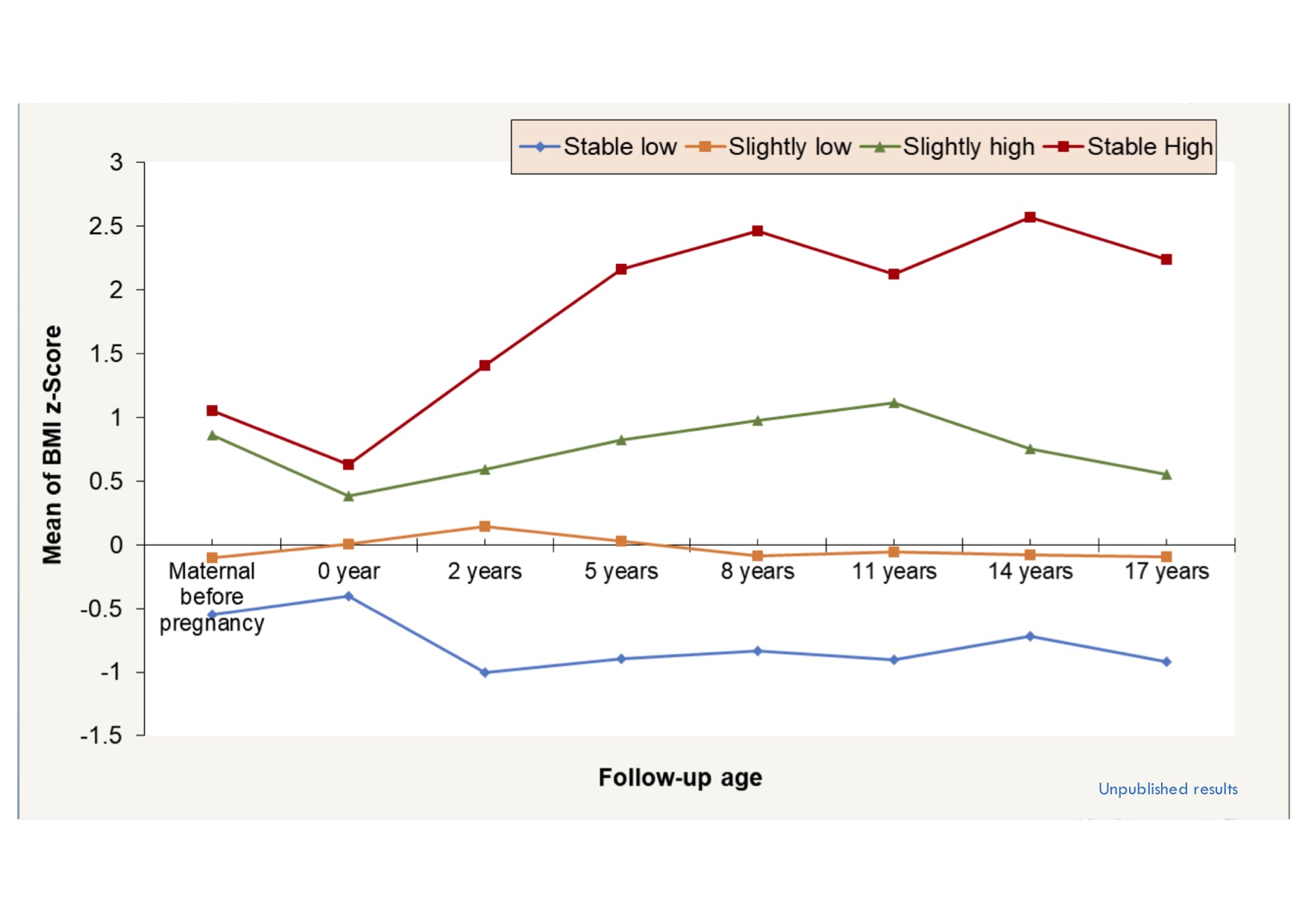Back
Environmental Health
Category: Abstract Submission
Environmental Health I
126 - Maternal and children BMI trajectory, and lipid profile regarding environmental endocrine disruptors – An 18-year birth cohort follow-up study
Friday, April 22, 2022
6:15 PM – 8:45 PM US MT
Poster Number: 126
Publication Number: 126.108
Publication Number: 126.108
Shu-Li Wang, National Health Research Institutes, Zhunan, Miaoli, Taiwan (Republic of China); Hui-Ju Wen, National Health Research Institutes, Zhunan Town, Miaoli, Taiwan (Republic of China); Chin-Chi Kuo, Big Data Center, China Medical University Hospital, Taichung City, Taichung, Taiwan (Republic of China)

Shu-Li Julie Wang, PhD
Principal Investigator / Professor
National Health Research Institutes
Zhunan Town, Miaoli, Taiwan (Republic of China)
Presenting Author(s)
Background: Obesity is a significant health issue worldwide. For instance, more than 41 million children were overweight or obese before five years of age. Obesity is a considerable risk factor for hyperlipidemia and cardiovascular diseases—environmental factors may play a crucial role, especially for obesogen-related environmental endocrine disruptors (EEDs).
Objective: The aim was to observe the BMI trajectory from early days of life to adolescents and examine the association of lipids profiles with the environmental endocrine disrupters.
Design/Methods: We established a birth cohort from the general population in 2000-2001, consisting of 430 pregnant women with urinary samples collected for iAs species analyses. In addition, we recruited 398 newborns in the follow-up study for obesity trajectory at 2, 5, 8, 11, 14 years of age. We assessed the effect of exposure to inorganic arsenic (iAs), paraben, and phthalate on lipid profile, including low-density and high-density lipoproteins, insulin, triglycerides, and adiponectin. Early-life exposure to environmental arsenic is associated significantly with the conversion to an atherogenic lipid profile.
Results: Using trajectory analysis, we can easily group the subjects into four categories of BMI-Z score - stably high, slightly high or low, and stably low from the pre-pregnant period to 2, 5, 8, 11,14, and 17 years of age in the children. Further, pre-pregnancy BMI is associated with BMI at pregnancy. Afterward, maternal BMI was related to their offspring's BMI at birth, 2, 5, 8, 11,14, and 17 years of age. Maternal urinary MMA levels are significantly associated with decreased adiponectin levels (protective for the atherosclerotic process), and iAs metabolism capability of DMA/MMA associated increased adiponectin in children aged 2-14. Maternal exposure to parabens, particularly for methyl and propyl parabens associated with increased cholesterols of both LDL and HDL.Conclusion(s): It implicated that women's physical fitness before pregnancy might be associated with their own and children's BMI up to 18 years of age.
Maternal fitness and prevention of the environmental endocrine disruptors of iAs and parabens might help prevent childhood obesity.
Mean of BMI z-score trajectories from maternal pre-pregnant stage to 17-years of age of their children
Objective: The aim was to observe the BMI trajectory from early days of life to adolescents and examine the association of lipids profiles with the environmental endocrine disrupters.
Design/Methods: We established a birth cohort from the general population in 2000-2001, consisting of 430 pregnant women with urinary samples collected for iAs species analyses. In addition, we recruited 398 newborns in the follow-up study for obesity trajectory at 2, 5, 8, 11, 14 years of age. We assessed the effect of exposure to inorganic arsenic (iAs), paraben, and phthalate on lipid profile, including low-density and high-density lipoproteins, insulin, triglycerides, and adiponectin. Early-life exposure to environmental arsenic is associated significantly with the conversion to an atherogenic lipid profile.
Results: Using trajectory analysis, we can easily group the subjects into four categories of BMI-Z score - stably high, slightly high or low, and stably low from the pre-pregnant period to 2, 5, 8, 11,14, and 17 years of age in the children. Further, pre-pregnancy BMI is associated with BMI at pregnancy. Afterward, maternal BMI was related to their offspring's BMI at birth, 2, 5, 8, 11,14, and 17 years of age. Maternal urinary MMA levels are significantly associated with decreased adiponectin levels (protective for the atherosclerotic process), and iAs metabolism capability of DMA/MMA associated increased adiponectin in children aged 2-14. Maternal exposure to parabens, particularly for methyl and propyl parabens associated with increased cholesterols of both LDL and HDL.Conclusion(s): It implicated that women's physical fitness before pregnancy might be associated with their own and children's BMI up to 18 years of age.
Maternal fitness and prevention of the environmental endocrine disruptors of iAs and parabens might help prevent childhood obesity.
Mean of BMI z-score trajectories from maternal pre-pregnant stage to 17-years of age of their children

